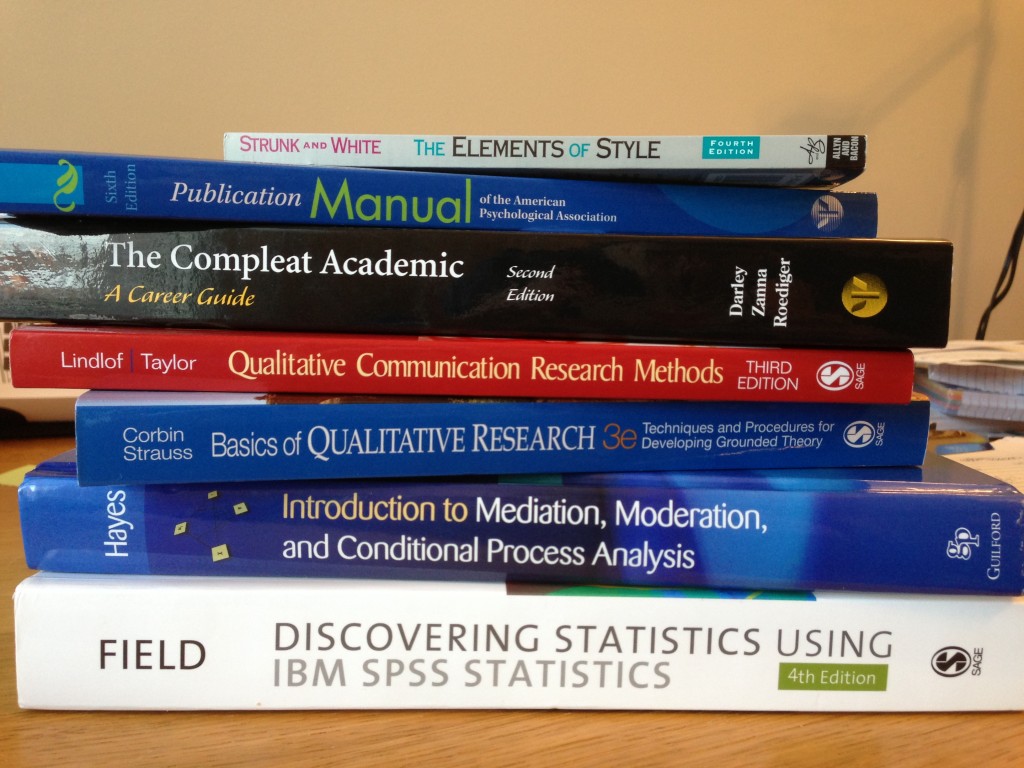 A recent study on selfies I published with my awesome Ph.D. advisee, Margaret Rooney, was picked up widely in the mainstream media this past week. Not unexpectedly, there was cheeky but accurate news coverage (e.g., CNN, Health,and I liked this video from the Chicago Tribune), appropriately measured coverage (e.g., Jezebel, a fellow blogger at Psychology Today), and awful, panic-stricken, inaccurate drivel accompanying splashy clickbait titles (too many tabloids and blogs to name). (Update: I’m also ecstatic to report it made The Onion.) I’m a bit behind the ball here but, in the name of good science and accuracy, I wanted to provide some answers and clarifications.
A recent study on selfies I published with my awesome Ph.D. advisee, Margaret Rooney, was picked up widely in the mainstream media this past week. Not unexpectedly, there was cheeky but accurate news coverage (e.g., CNN, Health,and I liked this video from the Chicago Tribune), appropriately measured coverage (e.g., Jezebel, a fellow blogger at Psychology Today), and awful, panic-stricken, inaccurate drivel accompanying splashy clickbait titles (too many tabloids and blogs to name). (Update: I’m also ecstatic to report it made The Onion.) I’m a bit behind the ball here but, in the name of good science and accuracy, I wanted to provide some answers and clarifications.
The short summary: we used data from an online survey of 800 nationally representative U.S. men aged 18 to 40. The survey asked them about social media behaviors and personality traits among some other items. We were interested in the relationship between some traits (the Dark Triad and self-objectification) and social media behaviors. We found:
- Self-objectification and narcissism predicted the amount of time men spend on social networking sites.
- Narcissism and psychopathy predicted the number of selfies men post on social networking sites.
- Narcissism and self-objectification predicted men’s editing of photos posted to social networking sites.
Here are some commonly asked questions as well as some clarifications about the study.
What is The Dark Triad, anyway? Sounds like a goth band.
These are what we refer to as antisocial personality traits. On the whole, these traits are associated with some pretty nasty behavior. Those high on the Dark Triad are manipulative, callous toward others, and often use deceit to get what they want. They focus on achieving their own goals, even when those are at the expense of other people.
Antisocial traits? But they’re using social media. Isn’t that social?
“Antisocial” doesn’t mean necessarily mean unwilling to associate with others; here it means these traits aren’t prosocial or beneficial for society. Dark Triad individuals are usually pretty adept at getting what their social needs fulfilled, but this is without regard for others. Social networking sites might help them meet those goals. Laura Buffardi and W. Keith Campbell published one of the first pieces on narcissism on social media in 2008, and several others have followed up with similar investigations. I would also recommend Dr. Chris Carpenter’s (2012) study, which identified specific behaviors narcissists exhibit on Facebook; this study that linguistically analyzed Facebook posts for indicators of Dark Triad traits; and Peter Jonason’s fascinating work on Dark Triad traits and interpersonal behavior more generally (e.g., here and here).
So, you found that narcissism predicts selfies. Um, #duh?
Admittedly, I wasn’t as interested in narcissism as I was the Dark Triad trait of Machiavellianism, which is characterized by being manipulative and amoral. I’ve identified relationships between Machiavellianism and other social media behavior, but it didn’t predict men’s selfie behaviors.
So, why is this finding still important? Well, first, just because something seems like common sense or something is commonly accepted doesn’t mean it’s scientifically accurate. Remember the good ol’ days when bacon (hey, protein!) and smoking (so relaxing) were good for you? Scientists have to confirm even the obvious stuff because sometimes there’s more going on than we think (which was the case here when you think about the roles of psychopathy and self-objectification.)
Second, the narcissism finding is a bit more interesting than it seems on face. The common understanding of narcissists is that they are self-absorbed, egocentric, entitled, and think they’re better than everyone else. This is accurate, but there is another important aspect of narcissism: an underlying insecurity. The selfie finding is interesting to me because it implies that narcissistic individuals may post selfies to address this insecurity. As I discuss in this paper, many social networking sites allow people to get comments, “likes,” and other forms of social feedback, and narcissists in particular may rely on these features (or affordances, if you want the scientific term) to make them feel better about themselves.
He posted a selfie! OMG! Is the guy I’m dating a psychopath?
Deep breaths. In this study, we measured the subclinical (i.e., normal) range of these Dark Triad traits. Everyone has a little bit of narcissism, psychopathy, and Machiavellianism in them. Yes, even you. We can’t draw conclusions from these data about clinical levels of psychopathy or what people would commonly describe as a “psychopath.” So, don’t believe the hype.
This isn’t to say subclinical psychopathy is a desirable trait, however. It is characterized by impulsivity and a lack of empathy for other people. People higher in psychopathy may post selfies online impulsively and without thinking. (It makes sense, too, that we didn’t see a relationship in between psychopathy and editing your selfies given this impulsivity.) Because people higher in psychopathy lack empathy, they might not care if you’re annoyed by all the selfies they post, either.
I told ’em! This generation! All them Facebooks and selfies are turnin’ those kids into narcissists!
This study was a survey, which means we can’t make any causal claims; experimental research is needed to answer those questions. Narcissism could cause selfies, or selfies could cause narcissism, or a third variable could be driving them both. We can only state that we observed a relationship between these things among a nationally representative sample of U.S. men aged 18 to 40.
Well, how many selfies can I post without looking like a total narcissist?
We only looked at selfie posting in this study. We don’t have enough research on how people perceive others’ selfies yet to answer this question. My common sense answer: if you have to stop and ask yourself if you’re posting too many selfies, you are probably posting too many selfies. My suggestion is to ask your close friends what they think about the frequency and content of your selfie posting–and don’t get defensive when they give you honest feedback.
Why did you only look at men, hater? Obviously it’s because you are female and out to get men.
Ah, the stupid, sexist things trolls say. Read the paper. Magically, the answer is there. The longer story:
Trust me, I would have loved to have a nationally representative sample of women as well, but I had no control over what went in the survey. Glamour magazine conducted the survey through a survey company. Most survey companies charge by chunks of time (e.g., 20 minutes) and you get to fill those minutes with questions. As a women’s magazine, of course they had more questions to ask the women, and they filled the women’s 20 minutes with other questions. (You can see the results in their November 2014 issue.) They had some time left over on the men’s side of the survey given they didn’t have to ask men about their thigh gaps and bikini bridges, and so they included the Dark Triad and self-objectification measures. Thus, no data on the Dark Triad or self-objectification for this particular sample of women.
Don’t fret, though. I already have data collected on women, and the results are coming soon. The problem is that a nationally representative sample is very expensive, so I collected data with a convenience sample of college women. This means the sample will be restricted in age, education, and race/ethnicity, unlike the men’s sample. So, we can’t be as confident that these data will represent U.S. women as a whole, but it’s a start in answering questions about women and selfies.
Anyway, that’s all I wanted to add except an additional thanks to Liz Brody, Shaun Dreisbach, and Glamour for making this research possible, and to Jeff Grabmeier, Joe Camoriano, and OSU University Communications for helping with the media traffic. It’s an academic’s dream to work with so many great people in so many different research-related contexts.

